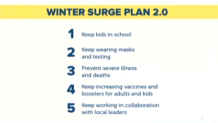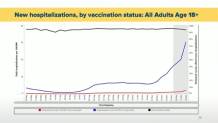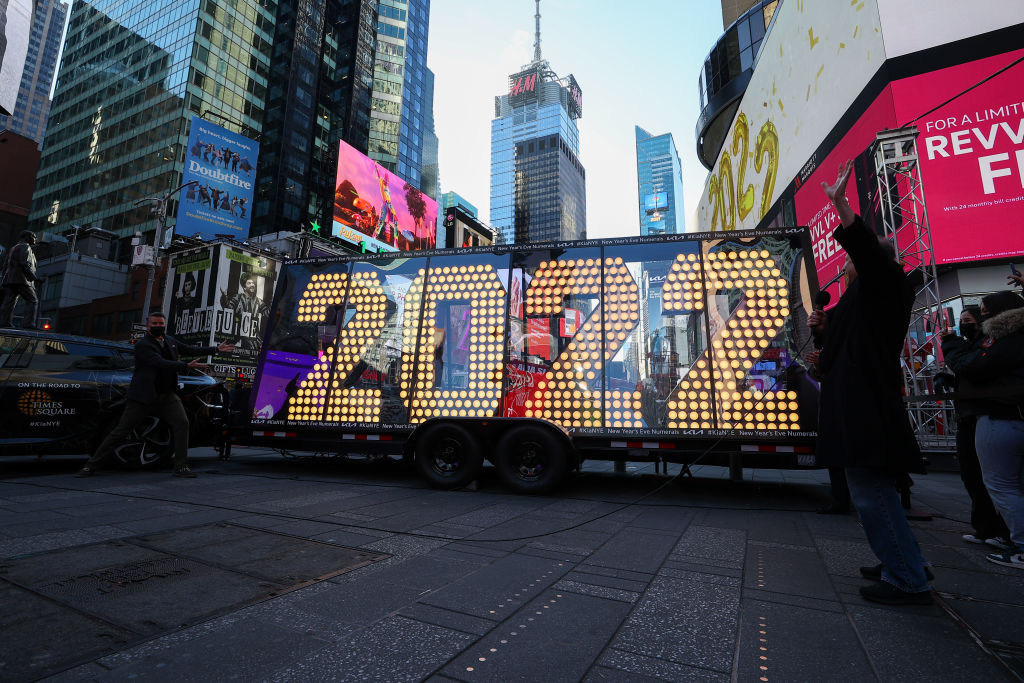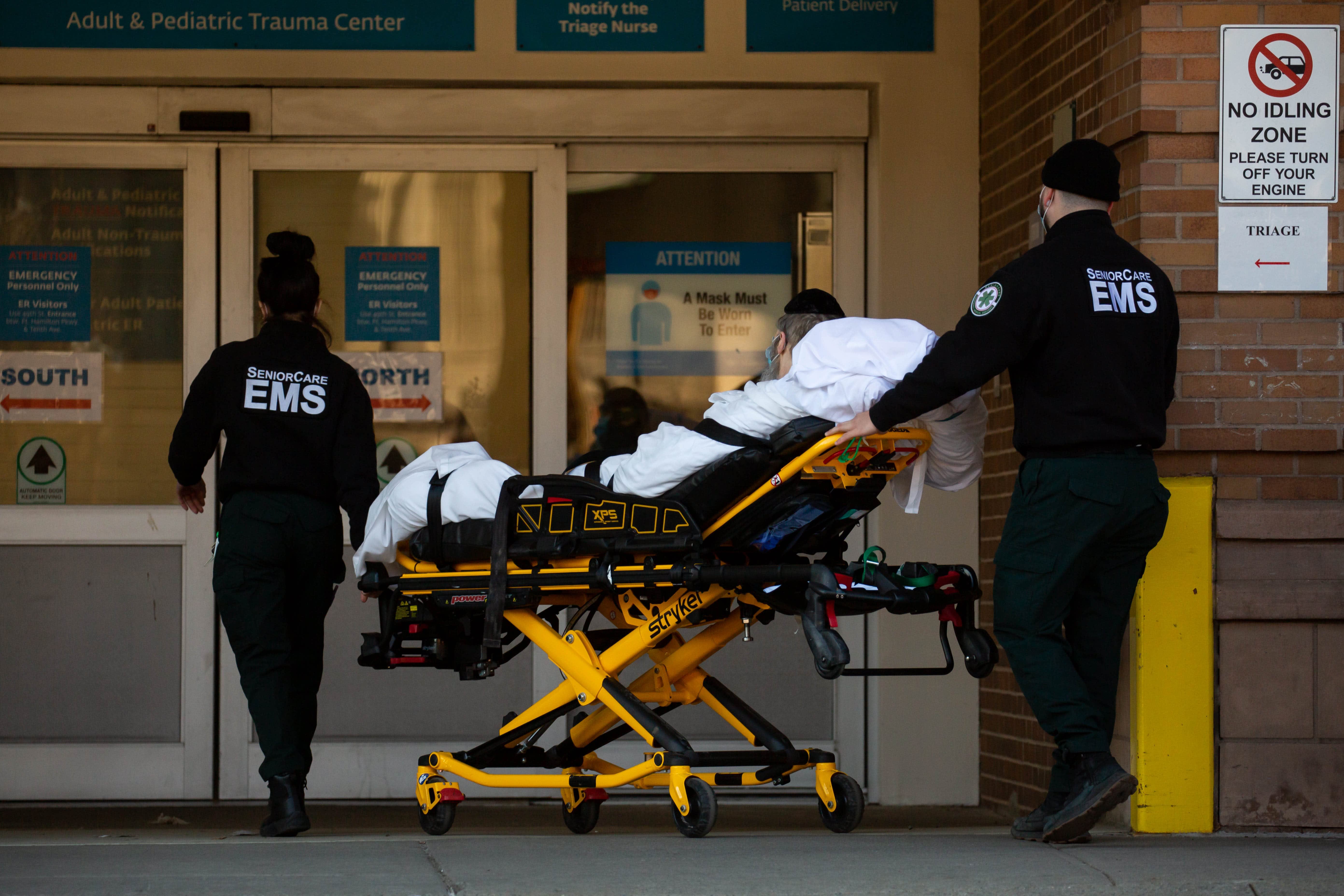What to Know
- New York state smashed its single-day COVID case record for the 3rd straight day Thursday, reporting 76,555 positives, as hospitalizations rise
- Virus hospitalizations are at early February levels and climbing, with NY reporting 7,919 patients as of Friday, a 7% increase in the last day
- While this intense omicron wave is expected to be shorter-lived than the delta one, Gov. Kathy Hochul says she expects a peak on all core COVID metrics next month and says the state is prepared to handle it
On the final day of 2021, the country's first calendar year completely engulfed by the COVID-19 pandemic, New York delivered one last record-smashing COVID case high for a third straight day.
The governor's final update for the year included a record 76,555 new positives as the omicron surge stretches the state's hospitals further. In her final address of 2021, Gov. Kathy Hochul detailed a revamped winter surge plan with five keys targets to aid overwhelmed hospitals and protect the most vulnerable.
Hochul's "2.0" plan for the current winter surge starts with education. In addition to the millions of tests already in hand and headed to schools across the state, another 6 million will be in New York by Monday, bringing the total of test kits for schools well past 11 million. State officials say they expect to have kits rolling out on a regular basis to meet demand and keep students in the classroom if safe to do so.
Get Tri-state area news and weather forecasts to your inbox. Sign up for NBC New York newsletters.
Booster shots will also be required for students returning to the state and city-run colleges, Hochlu announced. SUNY and CUNY students who are eligible for their booster shot must receive an additional dose of the COVID-19 vaccine when returning to campus, effective Jan. 15.

The second prong of the state's new plan is focused on mask wearing and expanding current testing operations. Hochul said her current "mask or vax" mandate in place for all businesses that was set to expire on Jan. 15 will be extended until Feb. 1, before warning of another extension if the surge requires it.
Six more state-run testing sites will also come online in the first week of the new year, following the 13 new ones opened this week, the governor added.
New York also has a stash of 5 million KN95 masks heading out to counties across the state, with hundreds of thousands earmarked for nursing homes. Shoring up nursing home safety is a cornerstone of the state's efforts to protect the most vulnerable, and in order to do so, Hochul said the state has asked the federal government for the ability to restrict visitors who are not vaccinated.
"Visit your loved one, but also don't be the reason that loved one does not survive because you brought the virus into the nursing home for them and their neighbors," Hochul said Friday, while pleading with anyone yet to be vaccinated to consider getting a shot before visiting.
More help from the federal government is on the way, she said. Fifty new ambulance teams will be headed to New York City in the new year, while dozens of additional medical response teams will assist in upstate regions, all deployed by FEMA, the governor said.

Meanwhile, hospitalizations continue to climb. As recently as the second week of December, Hochul assured New Yorkers "this isn't March 2020 or even January 2021," citing admissions totals well below January's peaks near 9,300.
Statewide COVID hospitalizations have well more than doubled since then and now total 7,919, with Hochul adding another 546 to the mounting count on Friday. Per every 100,000 New Yorkers, 30 who are not vaccinated are currently hospitalized versus only 2.1 who have received their doses.
To the governor's point, New York does have more tools at its disposal than it did in January 2021 or December 2020 and certainly an arsenal more than it did at the start of the pandemic. It is deploying them accordingly, Hochul says, as the state faces a "wildly unpredictable" variant that has astonished scientists and health experts alike with its rapid rate of spread and penchant for breakthrough infections.
But whether that arsenal includes additional statewide mandates, Hochul wouldn't commit to any added measures Friday. The governor said her current masking mandate for businesses meets to current need, and any future orders would be considered based on the state of the pandemic.
Breakthrough hospitalizations are far rarer, state data shows, a testament to vaccines' ongoing ability to prevent severe COVID-linked disease and death, officials say. That is the critical reason New York officials believe hospitals will be able to ride out the omicron surge, which isn't expected to peak for another month.
Asked earlier Thursday in a TV appearance on CNN if she thought the state would have to rely on National Guard assistance to cover staff shortages in hospitals, New York Department of Health Commissioner Dr. Mary T. Bassett acknowledged the rising hospitalization rates and said the state is closely monitoring them.
She also said New York is in regular communication with those troops, but hospital bed capacity across the state is stable for now. The number of hospitals that have had to pause elective procedures to preserve bed capacity is down from November.
"Let's keep focused on getting people vaccinated, let's remember to wear masks, avoid crowds when we can, be careful during the upcoming holiday season about how we plan our time and plan for the most vulnerable person in our group, and make sure that these gatherings remain safe for them,” said Basset, who endured a breakthrough COVID infection herself earlier this month.
The health commissioner says she expects recently adopted state guidance on return-to-work for essential personnel who are fully vaccinated and asymptomatic or have had their symptoms resolve without medication will help fill the gaps.
"We know vaccinated individuals shed less virus than people who are unvaccinated. There are a whole host of reasons to get vaccinated but probably the most important is people who are vaccinated are less sick," Bassett said.
She added that also applies to children, who are experiencing alarming increases of COVID hospitalization, especially in New York City. Bassett said earlier this week that none of the kids in the 5-to-11-year-old age group who are currently hospitalized in New York with the virus had been vaccinated, and just about a quarter of kids aged 12 to 17 currently hospitalized had been inoculated.
"That youngest age group, 5- to 11-year-olds who've been eligible for vaccination for about a month now, we still are seeing too few children vaccinated, something like 30% have gotten their first jab," Bassett said. "That's a number that we really need to see go up, we want people to protect their children."
A just-released CDC study found just 100 serious adverse events for 5-to-11-year-olds out of 8.7 million vaccine doses administered to date, which the agency says underscores the safety of the Pfizer shot and the heightened risk of not getting it.
Statewide, just 17.3% of kids in that youngest-eligible group have completed their vaccine series, the latest data shows. Almost a third (64.4%) of children aged 12 to 17 are fully vaccinated. That compares with respective rates of 16.5% and 71% for those age groups in New York City, which has seen its child COVID hospitalizations quintuple over the last three weeks while state pediatric hospitalizations doubled.
Omicron Variant: The Latest
The data are almost hard to fathom -- more than 22% of all COVID tests in the state came back positive Thursday, and in just the last seven days, about 1.7% of all New York residents have tested positive.
The omicron variant, the first local case of which was reported Dec. 2, accounted for 78% of genetically sequenced positive New York COVID samples uploaded to GISAID, the world's largest repository of COVID-19 sequences, over the last two weeks. That's up from 74.2% a day ago, 11.1% in the two-week period ending Dec. 18 and from 2.2% in the two-week period before that, state data shows.
CDC data for the latest two weeks says omicron could account for anywhere from 70% to 97% of current infections in the New York area for the week ending Dec. 25. Nationally, the prevalence is estimated to be as high as 74%, the agency says.
Ultimately, officials say vaccinations will quell the increases in hospitalizations and deaths associated with the omicron wave -- and those metrics are a much greater concern for them than infections alone. That's why they're urging calm at this time -- and pushing vaccinations and COVID boosters for those who have to get them.



